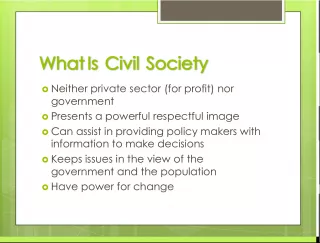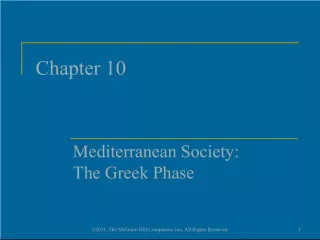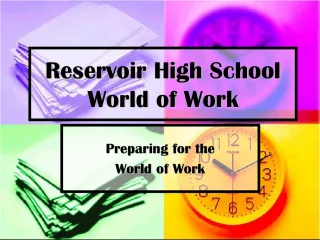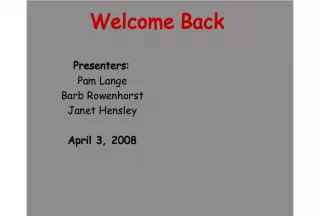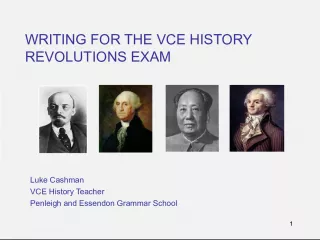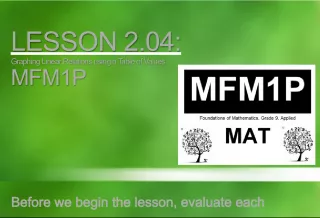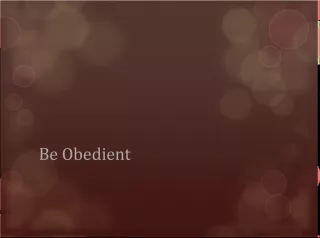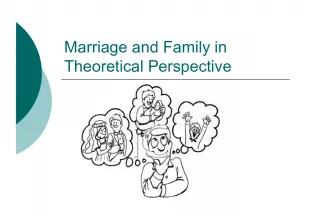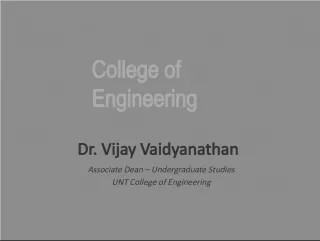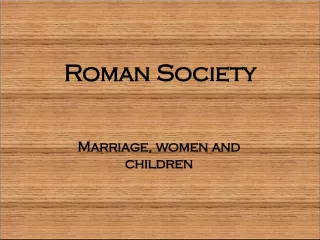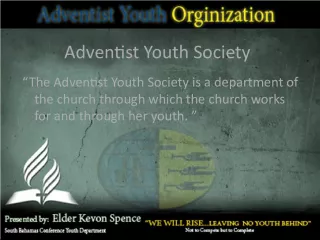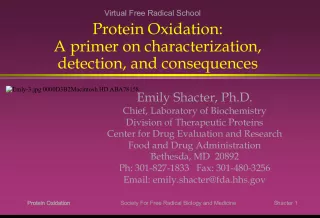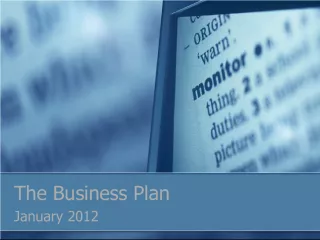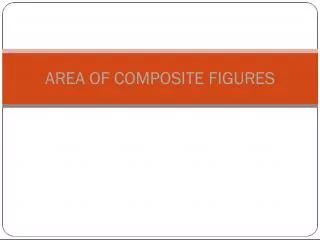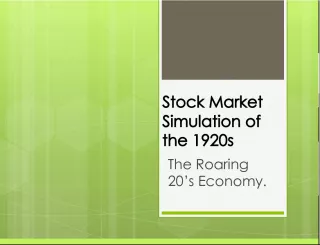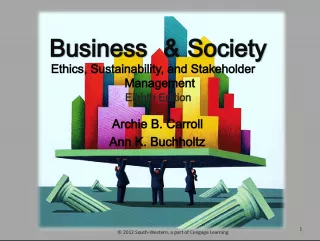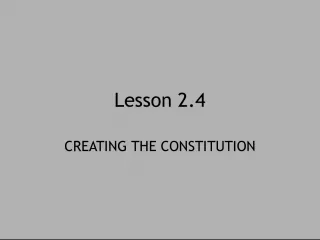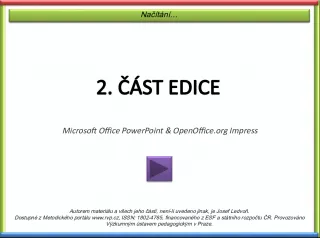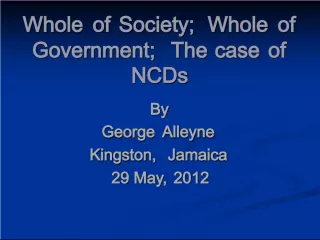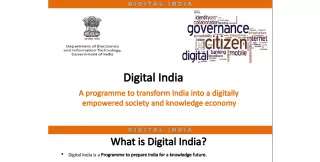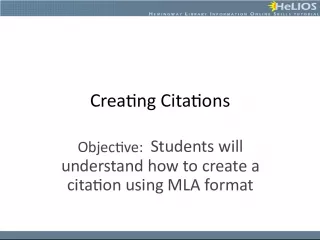Preparing Students for SAC 2: Creating a New Society


Luke Cashman from Penleigh & Essendon Grammar School discusses tasks, writing, and approach to questions in SAC 2 on creating a new society. Includes sample topics, responses, and grading criteria.
- Uploaded on | 14 Views
-
 alexisroy
alexisroy
About Preparing Students for SAC 2: Creating a New Society
PowerPoint presentation about 'Preparing Students for SAC 2: Creating a New Society'. This presentation describes the topic on Luke Cashman from Penleigh & Essendon Grammar School discusses tasks, writing, and approach to questions in SAC 2 on creating a new society. Includes sample topics, responses, and grading criteria.. The key topics included in this slideshow are . Download this presentation absolutely free.
Presentation Transcript
1. France AOS 2: Creating a new society Preparing your students for SAC 2 Luke Cashman Penleigh & Essendon Grammar School Luke.Cashman@pegs.vic.edu.au
2. Purpose of today’s talk • What tasks can you set for the SAC? • Which task should you set? • Writing the SAC and conditions to set • Approaching certain types of questions. • Engaging with the historiography • Practice topics. • Sample responses. • Criteria sheets and grading SACs. • General hints & tips for teachers & students.
3. Options for Revs SACs • Analysis of visual and written primary source documents • Argumentative Essay • Research Report • Historiographical exercises Teachers may choose the order of the assessment tasks Source: VCE History Study Design (October, 2009), p135
4. Points to consider when choosing the task • The VCAA examination: • Section A – Short answer questions (x2); document analysis • Section B – Document analysis ; Argumentative essay • Advice for students - Two options: • Decide during reading time based on questions and documents • Decide at some stage during the year (the earlier the better) • The key to the exam: France AOS 2 -- document or essay? [see past exams] • The nature of the task dictates (to an extent) how students prepare • Reduces students’ preparation load prior to the exam • If students prepare diligently, questions and unseen documents should not worry them • Decide early in the year so preparation time can be used more efficiently
5. General tips for setting the Argumentative essay* • The question : • A relevant quote or statement • The question itself • Tag: Use evidence to support your answer. • The conditions: • Time: 55 minutes • Reading time? • Number of questions (1, 2 or 3 choices?) • Seen or unseen? • Cheat sheet or not? • Word length: 600 ~ 800 words
6. Types of questions 1. Aims and goals 2. Crisis and response 3. Change and continuity Can focus on any or all of: a. Politics b. Society c. Economics
7. Aims and goals I • Who were the revolutionaries (social group; political club; branch of government?) • What did the revolutionaries want to achieve? Hampson emphasises the ‘limited aspirations and achievements of the revolutionaries’ (p250). • What documents, laws or acts do we have as evidence? • How and why did the revolutionaries fall short of these goals? • Response to a desperate situation? (Soboul; Doyle; McPhee; Furet & Richet)? • The essence of revolution? (Schama; Furet) • Were the original aims & goals re-established within the timeframe of the Study Design?
8. Aims and goals II • Possible essay structure: • Moderate phase (1789 – 1792) • Radical phase (1792 – 1794) • Return to moderate phase (1794 – 1795) • Alternatively: • Political aims and goals • Social aims and goals (including the Terror) • Economic aims and goals
9. Crisis and response I General considerations: • Who were the revolutionaries? • What challenges did the revolutionaries face? • How did the revolutionaries respond to those challenges? • Were those responses in proportion to the challenges? • Was the use of revolutionary violence and the establishment of a dictatorship justified? (Marxists vs Revisionists) • Soboul: ‘The Terror had struck a devastating blow at the old society, destroying it and clearing the ground for the emergence of new social relationships.’ (p124)
10. Crisis and response II • Who instigated the Terror: the sans culottes , the Jacobins or Robespierre ( dictateur sanguinaire )? • Furet & Richet: “The bourgeoisie… was now compelled by the mobs to adopt terrorist policies.” (p184) • Was Terror and dictatorship the essence of Revolution or a response to circumstances? • ‘Violence was the motor of the revolution.’ (Schama, p859) • ‘The force of circumstances may lead us to things we had not expected.’ Saint-Just, quoted in Furet and Richet, p185.
11. Counter-Revolution and the Terror: Time & Place Source: Michael Adcock, Analysing the French Revolution 2 nd ed., Melbourne: CUP, 2009, p172.
12. Crisis and response III Structure: Military, political, social/economic Crises/challenges/obstacles: a. Political crises (Louis XVI; army generals; the Girondin deputies; the Jacobin deputies) b. Military crises (foreign – Austrians; the Prussians; the War of the First Coalition; civil – the Federalist Revolt and the Vendée ) c. Social crises (the sans culottes ; the peasantry; the aristocracy) d. Economic crises (the assignant ; inflation; bread prices)
13. Crisis and response IV Responses/reactions: a. Political responses : Laws of Suspects and Prairial ; The execution of Louis XVI and other political opponents; the Great Terror b. Military responses: The CPS; Revolutionary Tribunals; surveillance committees; representatives on mission; atrocities in the provinces; the levée en masse c. Social responses: Centralisation – the Law of Frimaire d. Economic responses: Laws of Maximum; laws against hoarding; the armée revolutionnaire
14. Change and continuity I • Did France undergo significant and positive change as a result of the revolution? If so, in what areas and to what degree? [maximalists] • McPhee: “Life could never be the same again”. (p202) • Did the Revolution bring no change other than disruption and disaster? [minimalists] • Doyle: “The French Revolution is… in every sense a tragedy.” (p425) • Schama: “ [the] obvious rupture [of the Revolution] disguises a continuity of some importance.” (p854)
15. Change and continuity II • “For years it has been customary to regard the French Revolution as the decisive turning-point of modern European history… Recently, however, there has been a tendency to deny it any such paramount significance.” (Hampson, p249). • The Revolution “constituted no more than a modification of the previous distribution [of land and power] and perhaps an acceleration of trends already present under the ancien régime.” (Hampson, p254)
16. Change and continuity III • Did Revolutionary France get worse than the regime it replaced before before it got better? • Possible structure: • Political: “[T]he October Days of 1789 signified the end of divine right absolutism.” (Hampson, p256) • Social • Economic • OR: Moderate Phase; Radical Phase; Return to moderation
17. Change and continuity IV • Was life better for the French by 1795? • “The transfer of property brought about by the Revolution was also far less radical…” (Hampson, p251) • Who gained and who lost as a result of the French Revolution? • Aristocracy • Bourgeoisie: ‘ The Revolution was their triumph.’ (McPhee, p196) • Urban workers/ sans culottes : Doyle: ‘They had no gains to show… for all the upheaval and disruption.’ (p407) • Peasants • The poor and needy
18. Change and continuity V Social group % of pop pre-1789 % of total killed during the Terror Clergy 0.6 6.5 Aristocracy 0.4 8.2 Bourgeoisie btw 2 – 8 24.5 Sans culottes 6 31 Peasantry 85 28 Unknown n/a 1.8 Adapted from Fenwick & Anderson, Liberating France , Collingwood: HTAV, 2010, pp20 & 206.
19. Change and continuity VI McPhee: ‘[While] every noble family was directly affected by emigration, imprisonment or death… the Revolution was hardly a holocaust of nobles.’ (p184) Schama: ‘The Revolution had been but a brutal through mercifully ephemeral interruption of their [the aristocracy]social institutional power.’ (p856) Furet & Richet: ‘The sans culottes were to suffer just as much as the aristocrats from the Convention’s repressive measures.’ (p184) Norman Hampson: “The sans-culottes has been reduced to impotence…” (p245)
20. VCAA Criteria for Outcome 2* 1. Knowledge of the contribution of ideologies, individuals and groups in the creation of the new society. 2. Knowledge and analysis of the challenges faced by revolutionary individuals, groups, governments or parties and their responses. 3. Evaluation of the nature of society created by the revolution and the changes and continuities that it brought about. 4. Analysis and evaluation of evidence that synthesises a range of written and visual sources to draw conclusions. 5. Analysis and evaluation of historians’ interpretations. Source: VCE History: Revolutions Assessment Handbook 2005 – 2014.
21. Assessing SAC 2 • Sample responses in the Assessor’s Report are a good way to gauge the relative performance of your students • Against the criteria in a rubric or a “general sense”? • Ask students for permission to copy & distribute good samples* • Best samples are those done under exam conditions • Avoid using current students’ work if possible; anonymous • Type up if possible; warts and all • Have students “grade” samples and justify their decision (good empathy exercise)
22. Useful resources The following are good sources for exam questions: • Past VCAA exams and sample exams • HTAV exams • Insight exams • QATs
23. General hints and tips I • Think about what you want your students to write: how can they best demonstrate their knowledge and understanding of the Revolution? • Attempt the task yourself first (in full or point form) • For students: • Neat hand-writing (legible) • Be succinct and fluent (to the point, understandable and enjoyable!!!) • Answer the question – focus on key words (RUUP) • Use signposting (eg firstly, secondly, thirdly, however, on the other hand etc)* • Use reading time well (if given); also thinking time
24. General hints and tips II For students: • Be time-aware and time-disciplined in the SAC • Get used to the layout and format of the SAC • Genuine practice tasks completed under examination conditions (e.g. time) • For practice: Encourage students to write their own, swap & answer in full, point form or just an intro • Use specific facts and information • Avoid vague remarks like: “ met the needs of the people ” or “ made the French happy ” or “everybody hated the Terror”. • Make grids of the three question types and complete with the relevant information (group task)
25. General hints and tips III For students: • If you use extra writing space, indicate this and the question being continued CLEARLY • Know the chronology of key events and dates • Understand the chain of cause and effect • Be able to work backwards from an event so you can discuss causes • Use all the lines given but know when to stop • Speak to your teacher as often as possible • Read, read, read & write, write, write
26. Writing essays in the exam* • Only 30 minutes available • Approximately 500 words • Very short intro and conclusion – one to two sentences each • Clear statement of contention • Strong topic sentences • Plenty of evidence (facts, events, dates, names, laws etc) • Precise, relevant and succinct • Historians’ views not required
27. Bibliography • William Doyle, The Oxford History of the French Revolution , Oxford: OUP, 2002. • Jill Fenwick & Judy Anderson, Liberating France , Collingwood: HTAV, 2010. • François Furet and Denis Richet, The French Revolution , London: Weidenfeld and Nicolson, 1970. • François Furet, The French Revolution 1770 – 1814 , Oxford: Blackwell Publishers, 1996 [1988]. • Norman Hampson, A Social History of the French Revolution, London: Routledge & Keegan Paul, 1963 [1982]. • Peter McPhee, The French Revolution 1789 – 1799 , Oxford: OUP, 2002. • Simon Schama, Citizens: A Chronicle of the French Revolution , New York: Random House, 1990. • Albert Soboul, A Short History of the French Revolution 1789 – 1799 , Berkeley: University of California Press, 1965.
